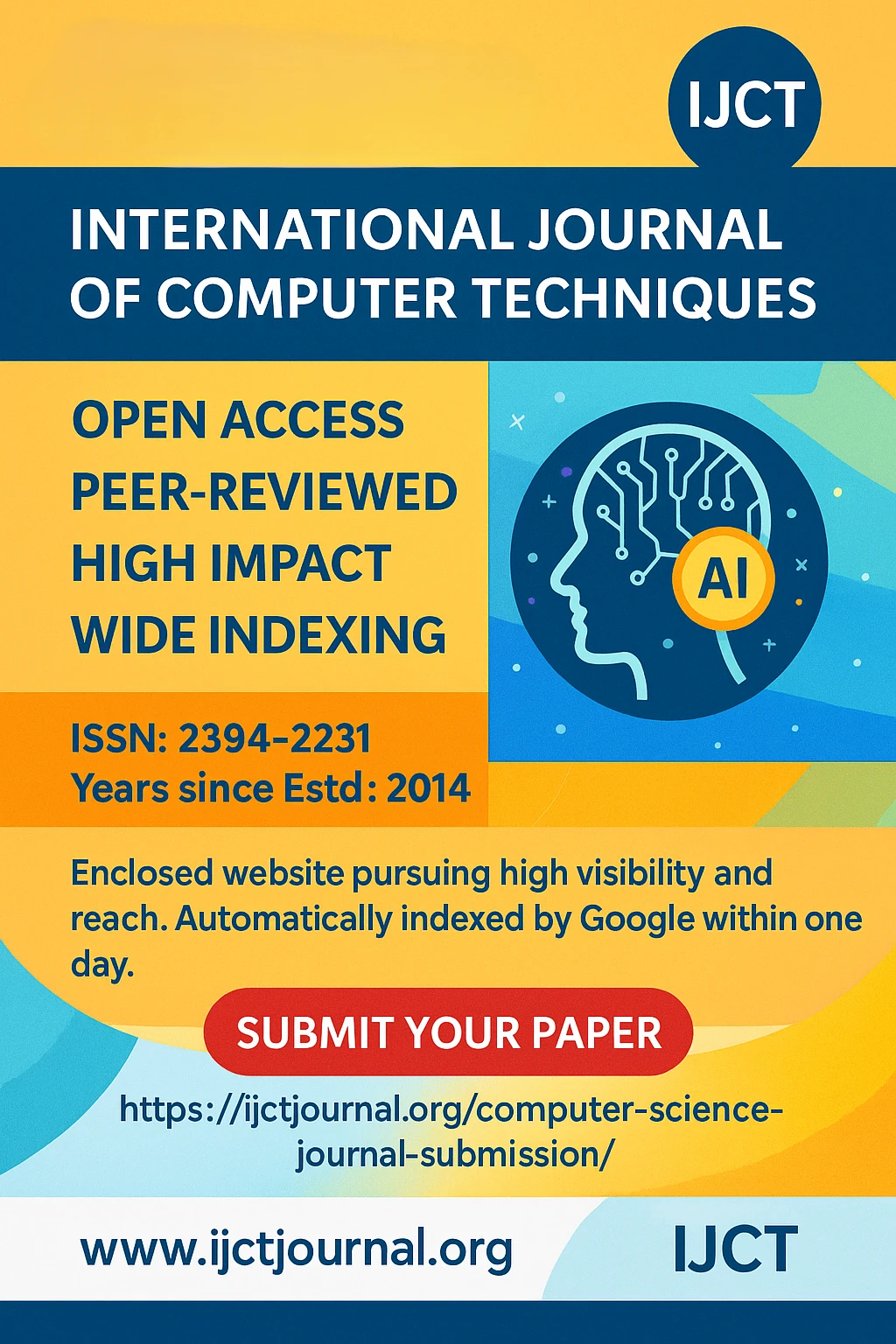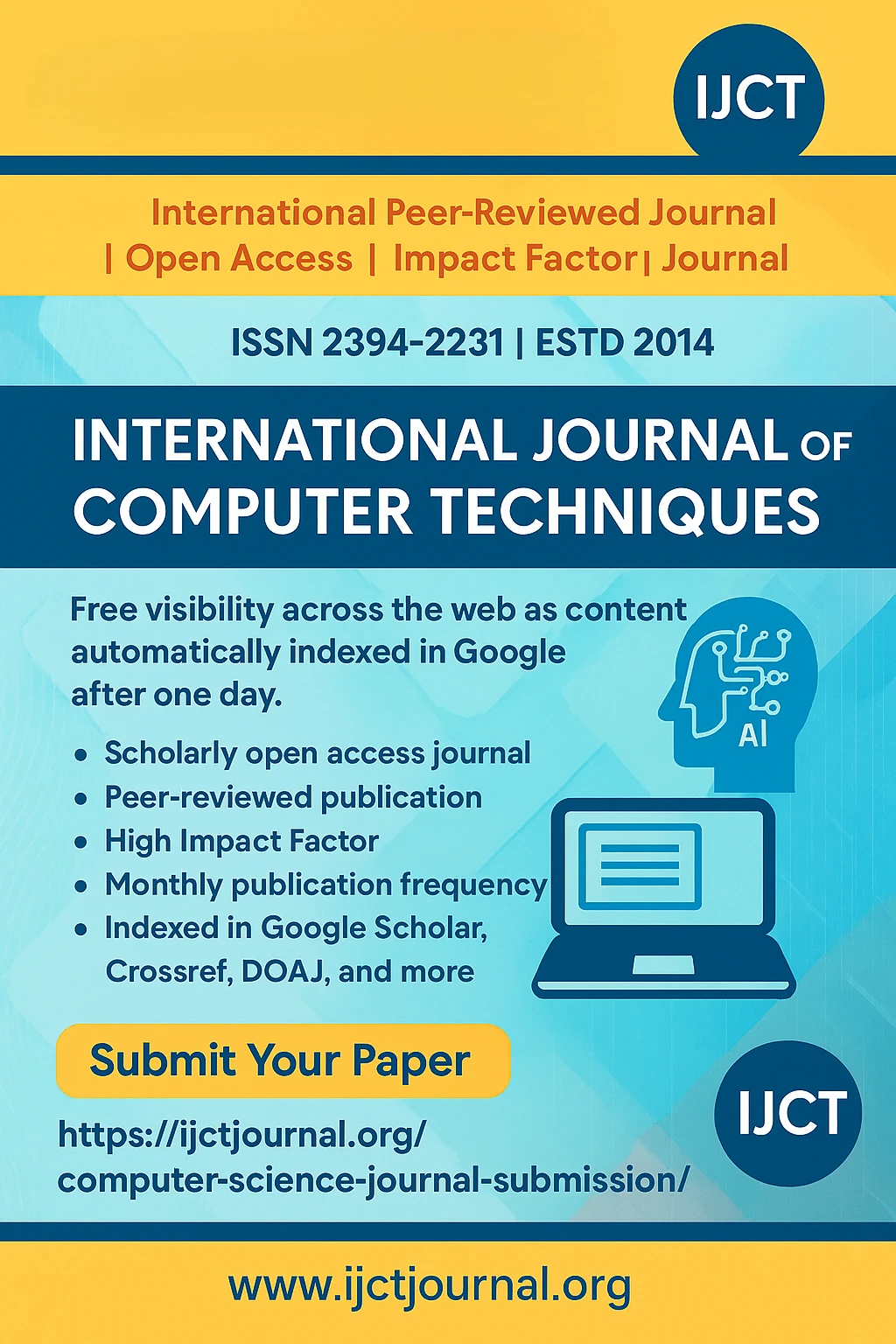
AI-Powered Smart Bandwidth Allocation with Emergency-Aware Prioritization and Real-Time Flask Dashboard for Mixed-Criticality IIoT over 5G/6G | IJCT Volume 12 – Issue 5 | IJCT-V12I5P70

International Journal of Computer Techniques
ISSN 2394-2231
Volume 12, Issue 5 | Published: September – October 2025
Author
Ruby Angel T G , Varun Kumar S , Barath Raj B, Sachin S , Thilak R , Shraddha
Table of Contents
ToggleAbstract
This paper unveils a fundamentally smarter approach to navigating this complex digital traffic. We’ve developed an AI- driven system that transcends simple bandwidth allocation; it proactively anticipates needs and responds with split-second precision to critical situations. At its heart, our system employs sophisticated AI techniques: Long Short-Term Memory (LSTM) to predict future network demands, and Reinforcement Learning (RL) to continuously refine how data is prioritized. A dedicated “Emergency Detection Module” stands as a vigilant guardian, instantly flagging critical events. Should an emergency arise, our Software-Defined Networking (SDN) Controller seamlessly reconfigures the 5G/6G network, effectively carving out a priority lane to ensure that vital data is pushed to the forefront without delay. Operators gain complete transparency through a real-time Flask dashboard, offering an intuitive, live overview of network health, device statuses, and immediate alerts. Our evaluations consistently demonstrate that this integrated system dramatically accelerates the flow of critical information, optimizes network resource utilization, and ultimately culminates in more secure, reliable, and efficient industrial operations.
Conclusion
The proposed AI-Powered Smart Bandwidth Allocation System demonstrates a novel approach to addressing the challenges of dynamic, intelligent, and context-aware bandwidth management for Mixed-Criticality Industrial Internet of Things (IIoT) environments operating over 5G/6G networks. By integrating Long Short-Term Memory (LSTM) networks for accurate traffic demand forecasting and Reinforcement Learning (RL) for adaptive bandwidth allocation, the system ensures optimal utilization of available resources while maintaining fairness and responsiveness to critical events.
The introduction of an Emergency-Aware Prioritization Module enables the network to reallocate resources dynamically during high-priority or life-critical situations, ensuring minimal latency and data loss for ultra-critical traffic such as health monitoring or industrial safety control. The accompanying Flask-based real-time dashboard provides intuitive visualization of key performance metrics—such as bandwidth utilization, fairness index, and traffic classification—allowing network administrators to monitor and manage the system efficiently.
Simulation results validate the system’s capability to maintain near-optimal bandwidth utilization (≈100%), ensure fair resource distribution (Jain’s Index ≈ 0.9), and deliver fast emergency response adaptation under varying load conditions. These findings affirm that the proposed model significantly enhances network intelligence, adaptability, and reliability compared to static or rule-based approaches.
Although the current implementation primarily relies on simulated IIoT traffic, future work will focus on integrating real sensor data and deploying the model in a testbed 5G/6G environment for field validation. Further improvements may include multi-agent reinforcement learning for distributed control, edge computing integration to reduce latency, and predictive analytics for proactive network management.
In conclusion, the system marks a significant step toward realizing autonomous, AI-driven, and emergency-resilient IIoT communication systems, capable of supporting the stringent performance demands of next-generation industrial and mission-critical networks.
References
[1] F. Tang, L. Zhang, X. Zhou, and J. Wu, “Intelligent Resource Allocation for Industrial IoT in 5G/6G Networks: A Deep Reinforcement Learning Approach,” IEEE Transactions on Industrial Informatics, vol. 18, no. 7,
pp. 4872–4884, Jul. 2022.
[2]J. Wang, C. Jiang, K. Zhang, Y. Ren, and L. Hanzo, “Network Slicing Assisted Resource Management for Service-Oriented Ultra-Dense 6G Networks,” IEEE Journal on Selected Areas in Communications, vol. 38, no. 2, pp. 294–306, Feb. 2020.
[3]K. Sood, S. Yu, and Y. Xiang, “Software Defined Wireless Networking Opportunities and Challenges for Internet of Things: A Review,” IEEE Internet of Things Journal, vol. 3, no. 4, pp. 453–463, Aug. 2016.
[4]X. Chen, Z. Zhao, C. Wu, M. Bennis, and H. Zhang, “Reinforcement Learning for Resource Allocation in 5G Ultra-Dense Networks,” IEEE Network, vol. 33, no. 4,
pp. 52–59, Jul.–Aug. 2019.
[5]S. Dey, “Machine Learning Based Traffic Prediction and Dynamic Resource Allocation in 5G Networks,” IEEE Access, vol. 8, pp. 132802–132815, 2020. [6][6] H. Zhou, T. Han, and N. Ansari, “Learning- Based Bandwidth Allocation in Heterogeneous IoT Networks,” IEEE Internet of Things Journal, vol. 7, no. 9,
pp. 8902–8912, Sept. 2020. [7]M. Chen, Z. Yang, W. Saad, C. Yin, and M. Shikh- Bahaei, “A Machine Learning Framework for Resource Allocation in 5G/6G Networks,” IEEE Transactions on Wireless Communications, vol. 20, no. 7, pp. 4310–4323,
Jul. 2021. [8]Flask Documentation, “Flask Web Framework,” [Online]. Available: https://flask.palletsprojects.com/
[9]TensorFlow Documentation, “Building LSTM Networks for Time-Series Forecasting,” [Online]. Available: https://www.tensorflow.org/ [10]OpenAI, “Reinforcement Learning: Policy Gradient Methods,” [Online]. Available: https://spinningup.openai.com/en/latest/
[11]S. Kumar, P. Singh, and R. Tripathi, “Emergency- Aware Prioritization for Critical IoT Systems Using Reinforcement Learning,” IEEE Access, vol. 10, pp. 112873–112885, 2022.
[12]A. Aijaz, “Towards 6G-Enabled Industrial Internet of Things: Key Performance Indicators, Use Cases, and Research Challenges,” IEEE Internet of Things Magazine, vol. 3, no. 4, pp. 4–9, Dec. 2020.
[13]3GPP TS 23.501, “System Architecture for the 5G System (5GS),” Release 17, 3rd Generation Partnership Project (3GPP), 2022.
[14]Y. Chen, T. Quek, and M. Peng, “Learning-Based Resource Management for Industrial IoT in 6G: Challenges and Opportunities,” IEEE Communications Magazine, vol. 60, no. 2, pp. 44–50, Feb. 2022
Gunicorn, “Python WSGI HTTP Server for UNIX,” [Online]. Available: https://gunicorn.org
Journal Covers
IJCT Important Links
© 2025 International Journal of Computer Techniques (IJCT).











